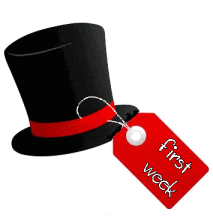 What does your first week of “library lessons” look like?
What does your first week of “library lessons” look like?
Have you programmed the usual round of sessions where students are reminded of where to find things, how to borrow them, how to look after them and how to behave? Another barrage of I-talk-you-listen Another barrage of white noise that confirms their belief that the library is a place for downtime for them?
Or have you planned something to stimulate their thinking and reflecting on what they know, where they talk and you listen and together you build an anticipation and excitement for the year ahead?
Thirty years ago, in Mathematics Education for a Changing World,, Stephen S. Willoughby identified that by Year 6 what was taught to students was 38% new and 62% was revision of what was already known and it was not until Year 9 that the “new” outweighed the known. This raises serious issues about motivation, attention levels and zest for learning. So if for six years or more, students come to the library in that first week and hear what they have always heard, then they will do what they always do – tune out, see little value in the library and what it offers, and join the majority of students who, Miller discovered, saw reading anything as just an imposed means to an end.
Yet those first sessions could be so much more. They could be an opportunity to build the platform for the rest of the year so that library time, particularly if it covers teacher preparation time, becomes meaningful, dynamic, productive and anticipated.
In the series All You Need to Teach Information Literacy that Macmillan Education commissioned me to write some years ago, I started each year level’s units with one that focused on the students reflecting on what they already knew about libraries to encourage both students and the teacher librarian to consider what still needed to be learned and to build their programs on that.

By using opened-ended questions and whatever format suits the age group (class discussion; think, pair share; individual written responses) students can identify and share their knowledge and understandings so the TL can ensure that their forthcoming learning was new, challenging and productive.
For ease of organisation, I’ve sorted the focus questions into year levels but they are designed to be mixed and matched according to circumstances (and avoid repetition)..
Kindergarten
- What is a library?
- Who can use the library?
- What sorts of things can you find there?
- What sorts of things can you do there?
- Who is there to help you?
Year 1
- What is your favourite part of the library?
- Can you usually find what you are looking for?
- If you wanted a book about … where would you find it?
- Do you understand why some things are found here and others there?
- How do you borrow something you want to take home?
- How do you look after it when it is at home?
- Is borrowing a book the only thing you can do in this library?
Year 2
- What do you know about our school library?
- What do you think new students would need to know about it?
- How could you help them learn about this library?
Year 3
- Why is the library the hub of the school community?
- How do you use the library for learning? For recreation?
- Once you have selected a fiction title, how do you find others by the same author or others in the series?
- Once you have selected a non fiction title, are you able to navigate it so you find the information you want easily and quickly?
- What could you do to make the library a better place?
Year 4
- Why do we have libraries?
- How are libraries organised so you can find what you want efficiently and effectively?
- Why are they organised this way?
- What services, apart from the circulation of resources, does this library offer?
- Which do you use?
- What else would you like to see offered?
Year 5
- How can you use what you know about this library to help others use it?
- How can you use what you know about this library to enable you to use other libraries?
- If you have a need for information, do you have a sequence of steps you can follow to solve it?
- Which ones are you comfortable with; which ones do you need support with?
Year 6
- If your teacher sets you a research assignment, do you feel that you can undertake it successfully, even if you feel a bit nervous at the beginning?
- What sequence of steps would you take?
- Why is being able to do research important?
- Why is being able to use a library efficiently and effectively important?
- How could you help another student use the library and its resources to complete a research assignment?
An analysis of students’ responses, including examining what is NOT said as much as what is, can help you shape the focus of your program with lessons only limited by your imagination.
For example, little ones respond to stories in which toys, teddies and animals are placed in situations with which they are familiar so why not introduce a teddy or two to be the ‘new student” that they have to teach. It puts them in the teaching role which is always powerful, the teddy in the role of the learner, and enables those who may be new or unsure to avoid the direct spotlight, often one which marginalises them. Even Kindy Kids can be authors with the tried-and-true strategy of experience, photograph and caption growing to a class book to share. (The pride in taking it home and showing parents their page was tangible!)

Brinda and Bella, dressed in school uniform, were used to introduce and review library places and procedures. Each year a new teddy joined the Kindergarten class and accompanied them through to Year 6!
At the other end of the scale, senior students were appointed Junior Journalists. Each trio chose a role of reporter, photographer or editor (which rotated with new assignments) and were assigned a school-based event, person or location to investigate and prepare a report for the school website so visitors to the site could get a deeper feel for the school. As well as gathering and preparing the information, they were required to document both their steps and feelings from beginning to end and many were reassured to discover that they were not the only ones who initially felt daunted and nervous at the start but liked the feeling of success and pride of the finished result. Being published in such an open forum also meant they had to be accurate and write carefully, and they could share their work beyond the family, a subtle way to showcase the work done in the library.

The Building Services Officer had a new-fangled GPS device so as part of a unit investigating the history and geography of the local area, Year 6 asked him how it worked. They learned a lot about latitude, longitude, maps and how to use them in a meaningful context as their work became an integral part of introducing the school to the public via the website.
Meanwhile, inspired by this clip, students in the middle years were tasked with developing a glossary that explained how to use the cues and clues of both print and digital texts so they could navigate them easily and readily. They began with examining lots of texts for their assigned focus – contents, captions, headings, subtitles and so forth – and had to produce a definition of it. Combined, these became a go-to reference point for others. Again, putting them in the role of the teacher is powerful and empowering and ensures student-directed learning and a differentiated cussiculum.
Another character that students loved was Dr Booklove, who was essentially in charge of the library. In the first week little ones worked “with” him to create some guidelines for looking after the things they borrowed from the library and not only were these displayed as a large poster, they designed a bookmark with the list on the back to be given to every student to help them remember what was needed. So even Kindy students became teachers. Older students also worked with him to determine what an orderly productive library time looked like when their class was there so both rules and consequences were collaborative, negotiated and age-appropriate.

Dr Booklove
The more learners are put in charge of their learning, the more invested and empowered they will feel; the more responsibility they are given, the more responsible they will be. So, having used their responses to identify gaps in their knowledge of library use and the information literacy process, look for ways in which they can become the teachers so whatever outcome you are seeking becomes not only an integral part of the learning but is embedded in a meaningful context which has purpose and allows them to transfer their new skills to new situations.
Apart from the increased engagement by the students in a model where they are the driver of their own learning, such an approach differentiates the curriculum allowing each to work at their own level of understanding. Usually, some well-considered questions that address what you want them to eventually know, do, understand and value to initiate thinking are all that is required for the investigation to develop its own momentum, opening the doors to self-directed learning that really needs a minimum of formal planning by the TL.
The first week sets the tone of what will follow for the year. It can either be Ho Hum or WooHoo.

Hi Barbra!
Thank you for this practical guide for the first week in the library. As a TL student this really helps make that first week seem less overwhelming for stepping into a new role. I love the way you have laid out guiding questions for each grade to help library time be so much more meaningful for the students. What really resonated with me was when you said those first library blocks “could be an opportunity to build the platform for the rest of the year so that library time, particularly if it covers teacher preparation time, becomes meaningful, dynamic, productive and anticipated”, it makes me so excited to be able to facilitate this in the library. 😊 I also love the name of your blog- because we all know how many ‘hats’ teachers wear, it’s never just the “teacher hat”!
-Maranda